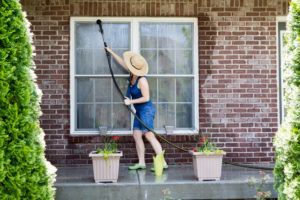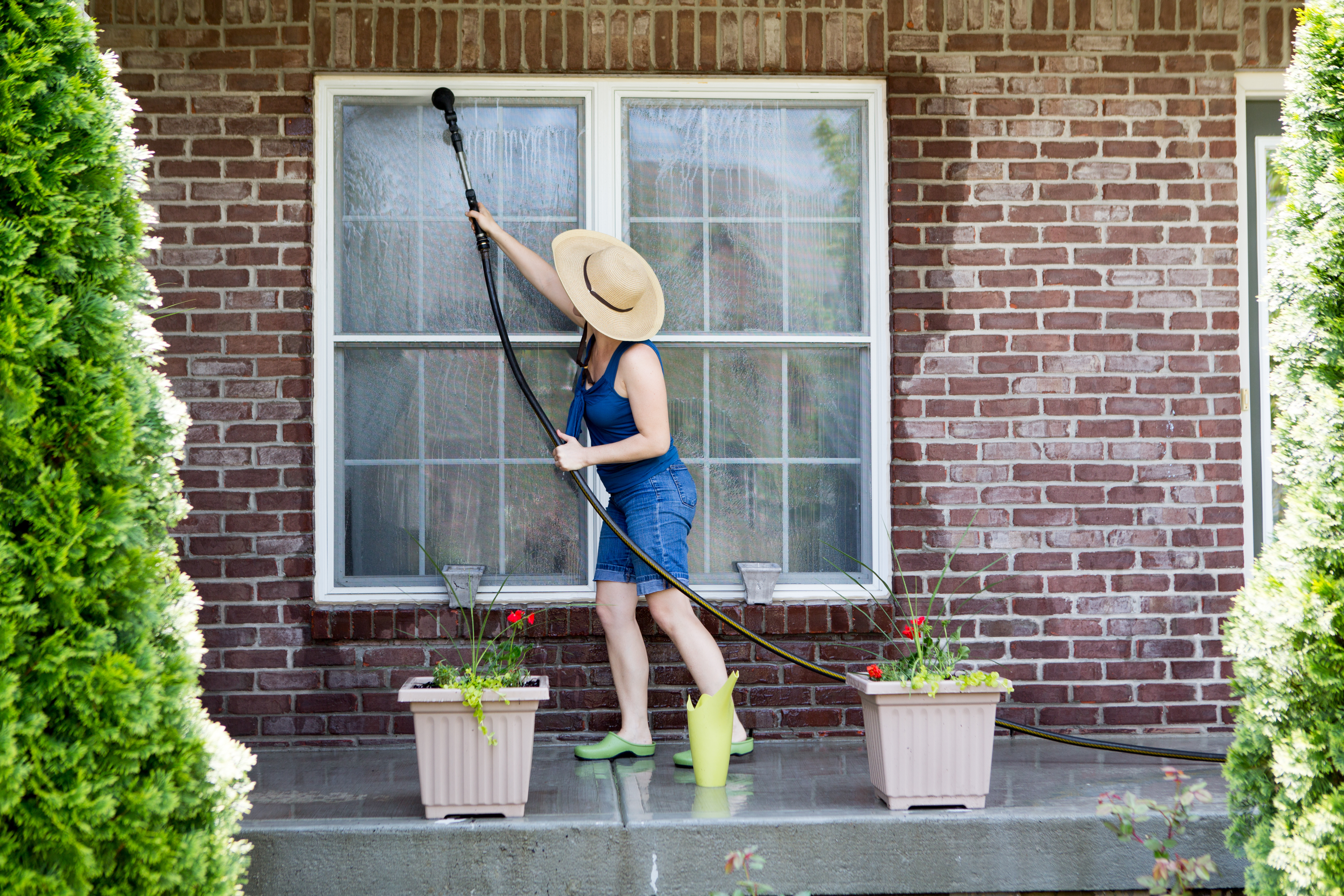
Work videos and ad with fit chics or dudes pushing sled or flipping tires are fun to watch but are quite intimidating. Do you watch them and think that the only way to get active is to engage in those form of activities? You not have to worry because being physically active is not limited to only intense workouts. In fact, you don’t even have to workout. You can reap some of the health benefits of working out by doing some of the things that you are currently doing.
Everyone has those days when there’s no time to exercise, but what if you could get in a workout while doing household chores? Actually, you can—by changing the way you do housework. With a little creativity, you can learn how to burn extra calories performing household tasks. Not only will you save time and money your housework and health just might improve.
Our idea of what constitutes as exercise is too narrow. This is because the images that portrayed are ones of people working out in the gym or running a marathon. I have never seen anyone promoting the benefits of doing house work to increase physical activity.
If think you have to cycle, bike or run around the block a few times to get a workout that counts then you need to open your mind to other possibilities ? It’s time to change your thinking! Exercise is movement and short periods of exercise count too. You can even earn fitness points for doing things around the house, as long as you do them with vigor.
How do we know this? A study carried out by researchers at Queen’s University in Canada showed the importance of unstructured physical activity for cardiovascular health and fitness. In the study, researchers quantified the activities of healthy adults. When they added up the minutes the participants spent moving throughout the day and compared it to their cardiovascular health, they came to a surprising conclusion. The time spent vacuuming the rug, climbing the stairs, and scurrying through the parking lot to get to a job, are beneficial for heart health. In the study, the researchers measured the minutes the participants moved using an accelerometer, a device worn around the waist that monitors activity. The participants didn’t do structured workouts, only the daily activities they normally do, like cleaning house, climbing stairs, and running errands.
There is one caveat. Non-structured physical activity is most effective when you do it vigorously, not leisurely. When you scrub the bathtub, for example, clean that basin with vigor, not at a leisurely pace. By the way, scrubbing the bathtub for 15 minutes burns 60 calories. But, even if you do it in a more leisurely manner, you’re doing something other than sitting. That’s important because we now know that sitting is an independent risk factor for cardiovascular disease, even in people who do a structured workout.
Another study published in the journal Lancet looked at the movement habits of 130,000 people from around the world found that being physically active for at least 30 minutes per day was linked with a longer lifespan and reduced odds of developing a serious illness. This includes non-structured exercise like doing outside chores and indoor housework. Nothing like accomplishing two tasks at once: a chore and a workout!
Making Unplanned or “Incidental” Exercise Work for You
If you can’t do a structured exercise, make the most of the time you have to move. Pick up the pace when you walk. Interestingly, walking speed is correlated with the risk of mortality. Slowpoke walkers have a higher risk of dying than speed demons. You’ve heard it before, but park as far from destinations that you visit as possible, so you have further to walk. Walk when you talk on the phone. That’s another benefit of a smartphone; you can move while you use it.
Rethink whether to hire someone to do tasks like gardeing, mowing the lawn, raking leaves, or shoveling snow. These activities are intense enough to offer cardiovascular benefits, so why not do them yourself? And stop being so energy efficient. When you walk, swing your arms with vigor, use long strides, and keep the pace snappy. Forget about elevators. Make friends with the stairs and make sure you’re wearing a pair of shoes that can safely navigate a staircase; high heels aren’t the best choice. You can even strap on a weight vest when you walk.
Ready to tackle the chores and get fit? Here are five unique ways to exercise while keeping house:
Cook Without Appliances
Modern kitchen appliances make food preparation almost effortless, but exerting effort in the kitchen can be a good thing, especially for your health. Next time you bake, put the mixer in the cupboard and pull out the whisk instead. You’ll work your arms, tone muscles, and burn calories. Chopping, kneading, peeling, and grating can be done manually, too. For additional exercise, hand wash the dishes.
Iron to Music
Believe it or not, ironing burns significant calories—anywhere from 75 to 150 per hour. But you can add to that total by plugging in some music and turning your ironing session into a workout session. Move your feet while ironing, or better yet, set down the iron between shirts and do a series of aerobic steps, jumping jacks, or dance moves. Ironing to music makes this mundane household task more active, engaging, and fun.
Clean the Old-Fashion Way
Scrubbing is about as active as a brisk walk, and you’ll accomplish important housework while doing it. Say goodbye to the mop, grab a sponge, and get on your hands and knees for some good old-fashioned cleaning. There’s plenty to scrub, including the floor, bathtubs, kitchen counters, and sinks. And don’t forget the walls, door knobs, and windows. An hour or two of scrubbing is great exercise for the entire body.
Organize and rearrange the Closet
Don’t just clean the closet, organize and rearrange it. Moving hangars, folding clothes, repositioning shelves, and sorting shirts and shoes are all active chores that burn calories and work muscles. When you’re done with the bedroom closet, move on to the other closets in the house. Then box up items to donate. You’ll appreciate the results of your hard work, including improved fitness.
Vacuum Hard-to-Reach Spaces
Pushing a vacuum across the living room carpet is one thing, but vacuuming stairs is quite another. It takes considerable effort to maneuver vacuum brushes and crevice tools between stairs, around vents, and under furniture. You may be surprised at all the dirt you find in those hard-to-reach spaces, but don’t be surprised by the extra calories you burn. Vacuuming alone earns you more than 200 per hour.
The Bottom Line
Household chores are necessary, but so is daily exercise. When time is at a premium, do them together. The above activities will help you burn extra calories while you conquer the housework
It’s not just the exercise you do at the gym that counts. So, do the things you do around the house. The bottom line is we need to be more active regardless of whatever form that activity comes in. But, keep in mind, you gradually lose muscle mass after the age of 30 and working your muscle using resistance is the way to reduce that loss. Including 2 to 3 sessions of strength training or resistance training in your weekly routine is wise even if you’re an active person. But, know that every movement that you make with intensity counts toward getting fitter and healthier. You will lose or maintain your weight and also decrease the risk of developing health conditions such as high blood pressure, diabetes, and high cholesterol. You don’t have to invest in a gym membership to stay fit. The gym is wherever you happen to be even at the office.
References:
Health News Daily. “Attention Exercise Haters: Everyday Activities Improve Fitness”
The Lancet. Volume 390, Issue 10113, P2643-2654, December 16, 2017
Health Stats. Calories Burned Estimator
